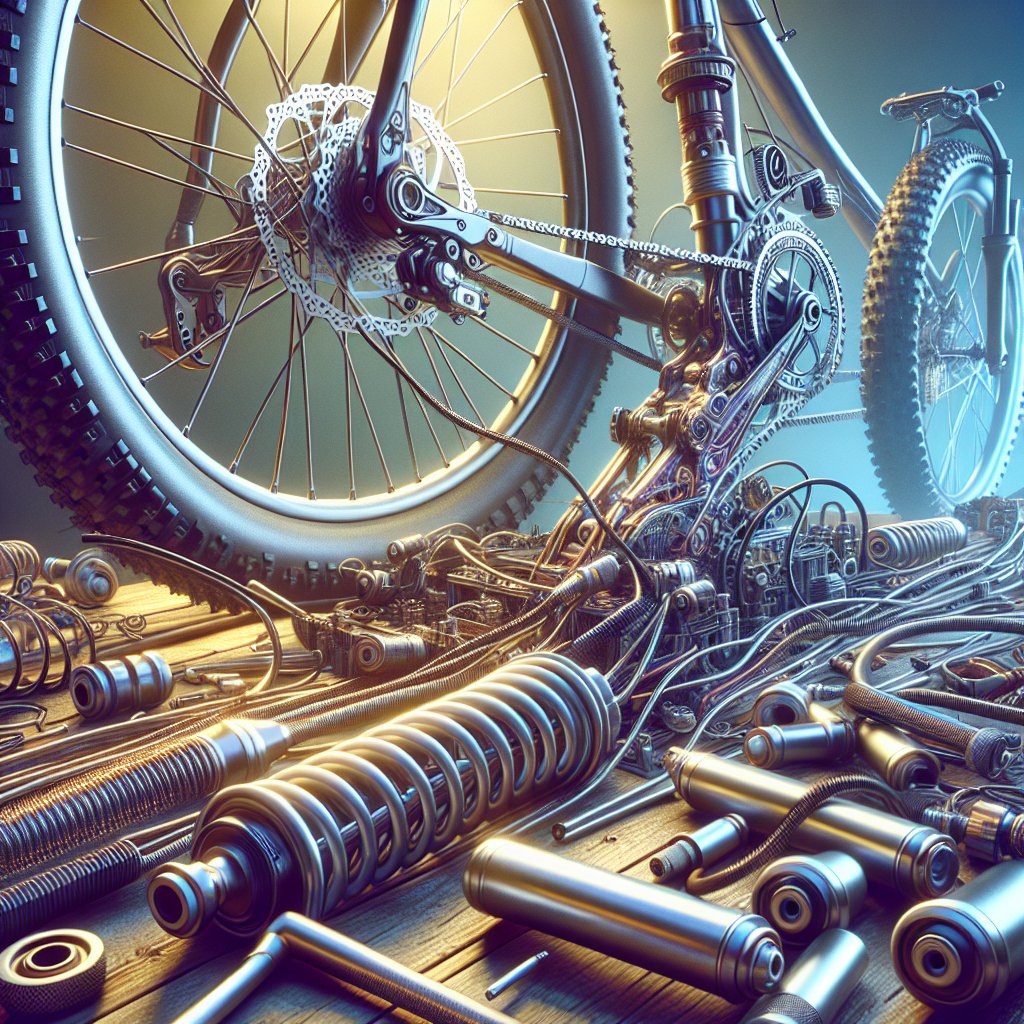Maintaining your bicycle suspension is crucial for ensuring a smooth and safe ride, whether you’re tackling rugged mountain trails or cruising through city streets. This comprehensive guide will walk you through the essential steps and tips for keeping your bike’s suspension in top condition.
Understanding Bicycle Suspension Systems
Before diving into maintenance, it’s important to understand the different types of bicycle suspension systems. Generally, bicycles come with either front suspension (hardtail) or full suspension (dual suspension). Each type has its own set of components and maintenance requirements.
Front Suspension (Hardtail)
Front suspension systems, commonly found on hardtail mountain bikes, consist of a suspension fork that absorbs shocks from the front wheel. This type of suspension is simpler and lighter, making it easier to maintain. Key components include the fork stanchions, seals, and damping system.
Full Suspension (Dual Suspension)
Full suspension bikes feature both front and rear suspension systems. The rear suspension typically includes a shock absorber and a linkage system that connects the rear wheel to the frame. While offering superior comfort and control, full suspension systems require more frequent and detailed maintenance.
Routine Maintenance Tasks
Regular maintenance is essential for prolonging the life of your bicycle suspension and ensuring optimal performance. Here are some routine tasks you should perform:
Cleaning
Keeping your suspension clean is the first step in maintenance. Dirt and grime can cause premature wear on seals and stanchions. Use a soft brush and mild soap to clean the suspension components, and avoid using high-pressure water, which can force dirt into seals and bearings.
Lubrication
Proper lubrication reduces friction and wear on moving parts. Apply a suspension-specific lubricant to the stanchions and seals. Be sure to wipe off any excess lubricant to prevent attracting dirt.
Inspection
Regularly inspect your suspension for signs of wear or damage. Look for oil leaks, scratches on the stanchions, and any unusual noises during compression and rebound. Addressing issues early can prevent more serious problems down the line.
Advanced Maintenance and Servicing
In addition to routine tasks, your bicycle suspension will require more advanced maintenance and servicing at regular intervals. This includes tasks such as changing the oil, replacing seals, and servicing the damping system.
Oil Changes
Suspension forks and shocks use oil to provide damping and lubrication. Over time, this oil can become contaminated and lose its effectiveness. Refer to your suspension manufacturer’s guidelines for recommended oil change intervals. Typically, this involves removing the fork or shock, draining the old oil, and refilling with fresh oil.
Seal Replacement
Seals prevent dirt and moisture from entering the suspension system. Worn or damaged seals can lead to oil leaks and contamination. Replacing seals requires disassembling the suspension components, so it’s often best left to a professional mechanic unless you have the necessary tools and experience.
Damping System Servicing
The damping system controls the compression and rebound of your suspension. Over time, the internal components can wear out or become contaminated. Servicing the damping system involves disassembling the fork or shock, cleaning the internal parts, and replacing any worn components. This is a complex task that may require specialized tools and knowledge.
Tools and Supplies for Suspension Maintenance
Having the right tools and supplies is essential for effective suspension maintenance. Here are some items you’ll need:
- Suspension-specific lubricant
- Soft brushes and mild soap
- Suspension oil
- Seal kits
- Torque wrench
- Suspension pump
- Clean rags
- Specialized tools for disassembly and reassembly
When to Seek Professional Help
While many maintenance tasks can be performed at home, some situations require professional expertise. If you’re unsure about any aspect of suspension maintenance, or if you encounter a problem that you can’t resolve, it’s best to take your bike to a qualified mechanic. Professional servicing ensures that your suspension is properly maintained and can help prevent costly repairs in the future.
Conclusion
Maintaining your bicycle suspension is essential for a smooth and safe riding experience. By understanding the different types of suspension systems, performing routine maintenance tasks, and knowing when to seek professional help, you can keep your bike in top condition and enjoy many miles of trouble-free riding. Remember, a well-maintained suspension not only enhances your ride but also extends the life of your bicycle.



